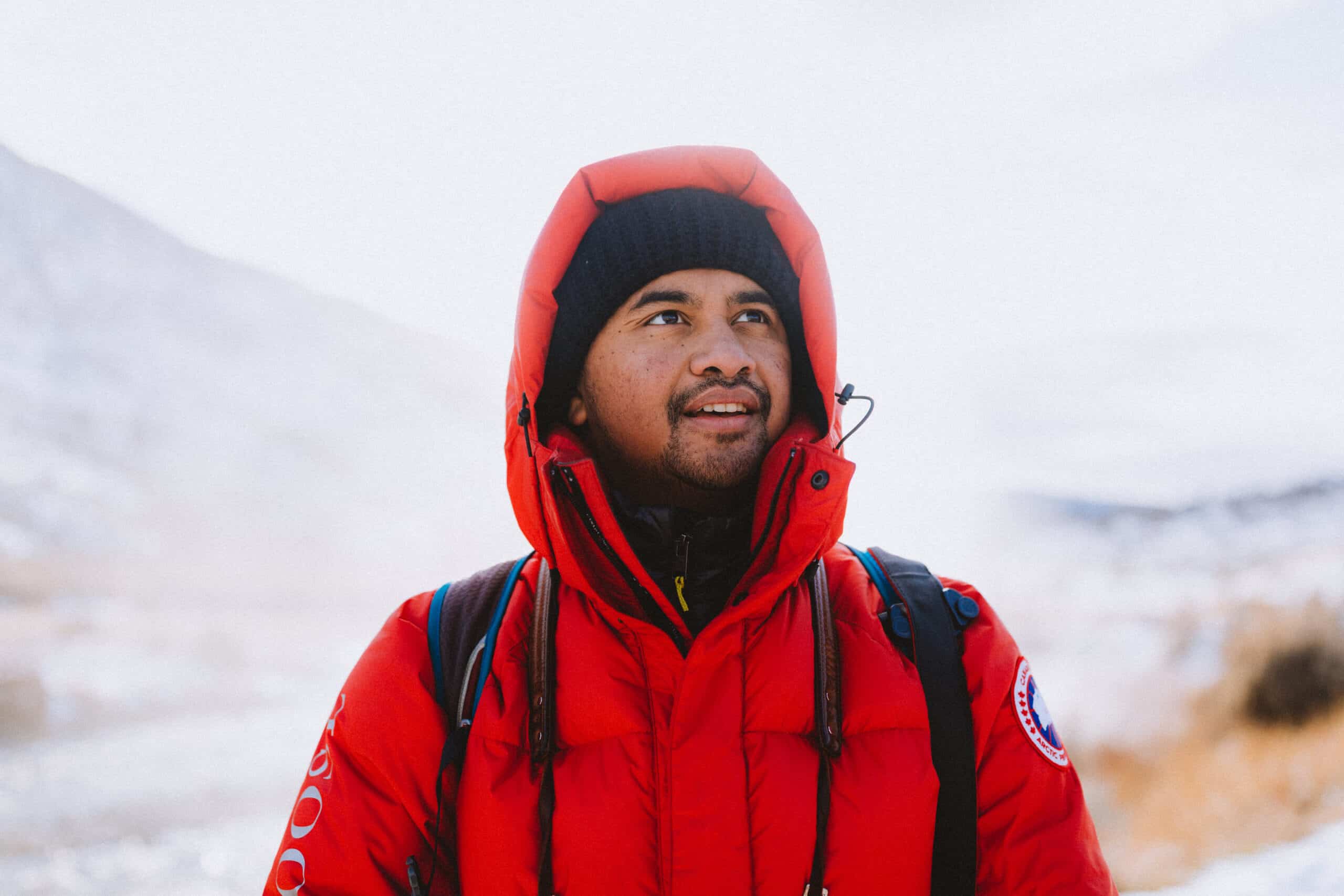Post Summary: How To Layer Clothes For Winter To Maximize Warmth and Function
People are always raving about how Banff in winter is beautiful, or that winter road trips are superior. (We would agree!)
But thinking about getting outside in the winter can often feel daunting. I mean, where do you start on figuring out how to layer clothes for winter? How can you prevent yourself from getting too cold?
Before you write off that next Washington winter hike invitation, we’re here to tell you that winter adventures can absolutely be some of the most fun you’ll have outside.
They’re a great way to beat the winter slump and feel accomplished, even with shorter days.
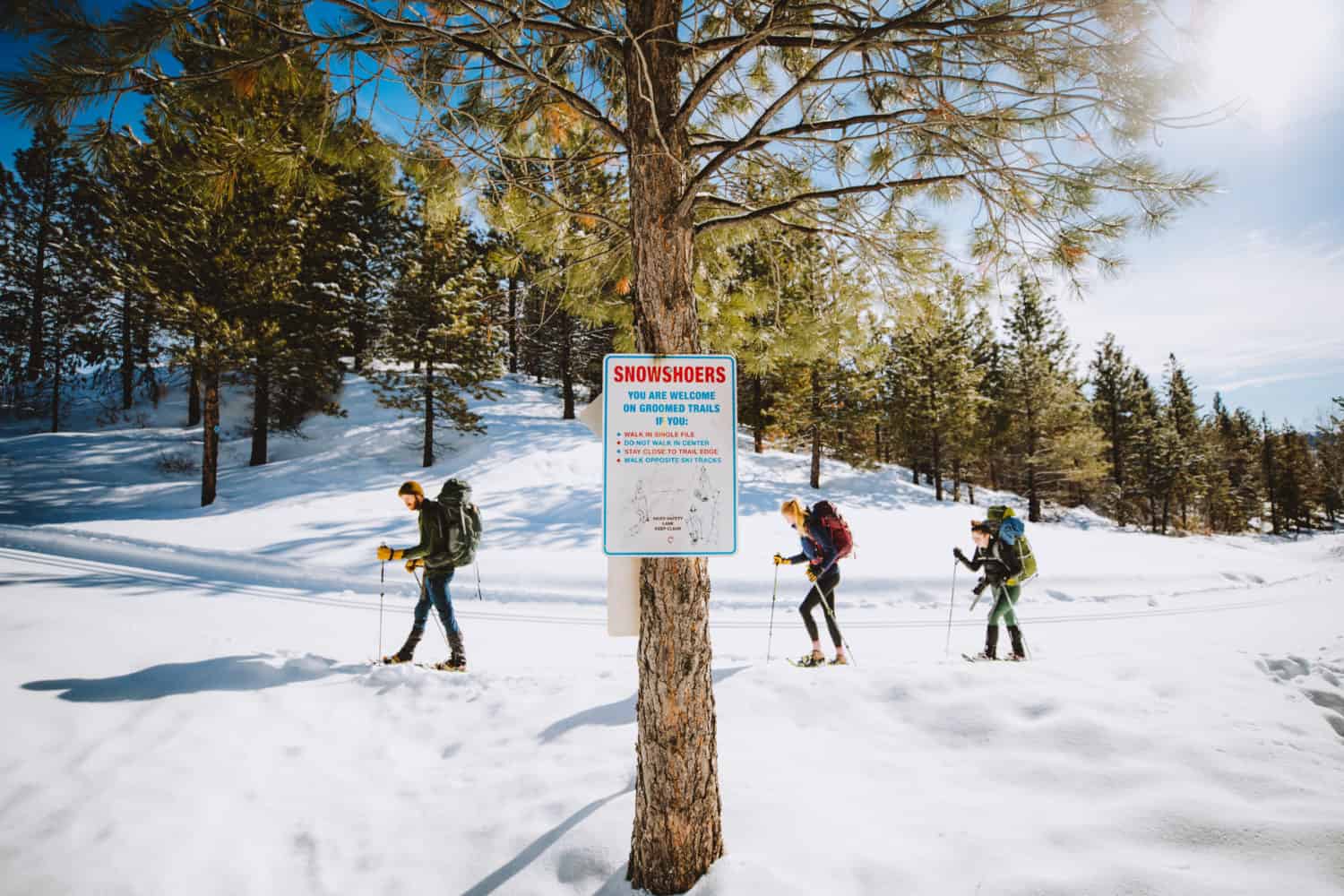
In order to get the most out of your winter days outside (and to help make sure you’ll want to do it again), it’s important to know how to layer clothes for winter.
This way, you can stay warmer, longer, and enjoy those fleeting moments in the snow.
Keep scrolling for our tips on how to properly layer your clothes so you can stay warm this winter!
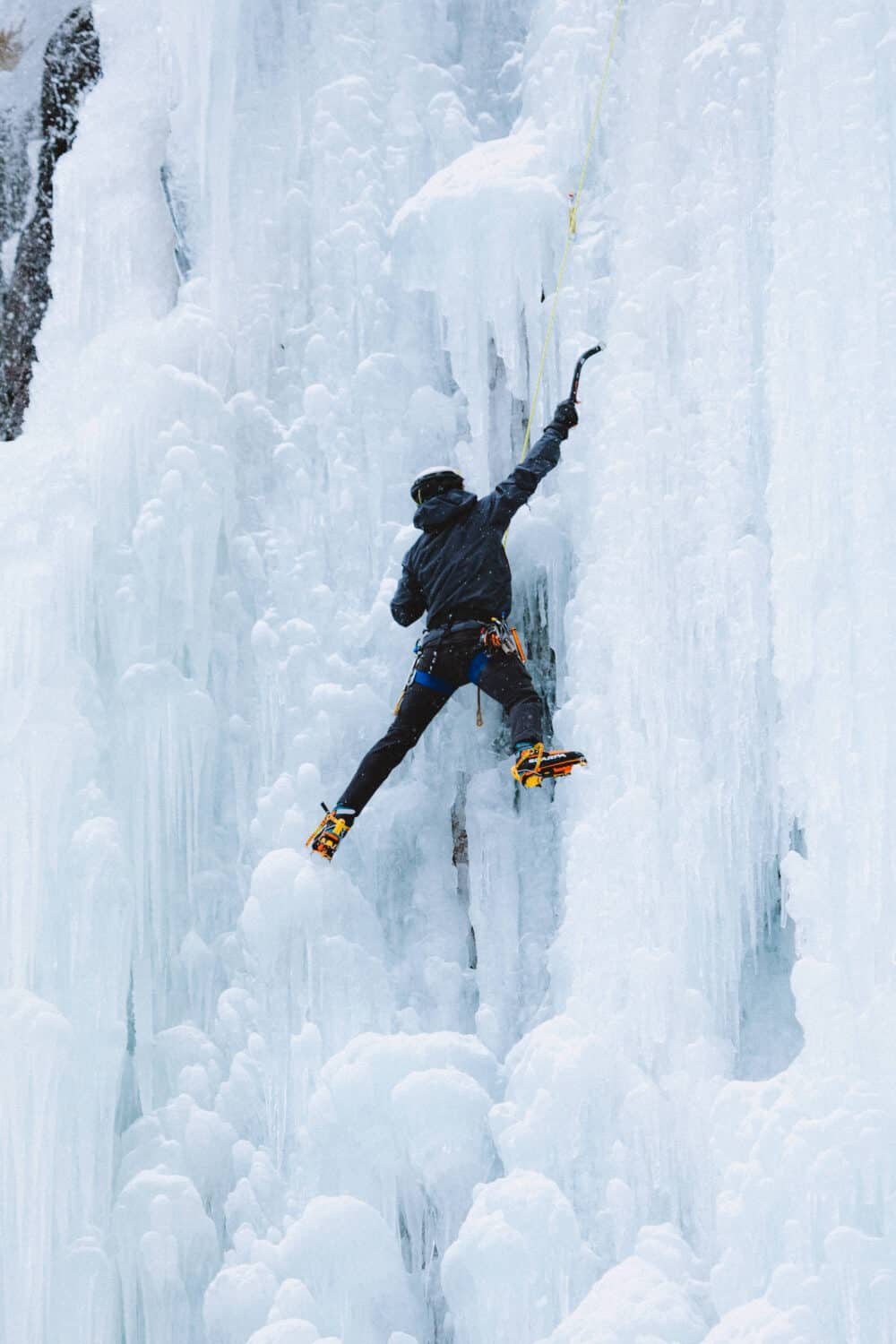
The Essential Guide On How To Layer Clothes For Winter
This post was written by adventure contributor Whitney Matthews
Winter Hiking Layers Breakdown (Click to jump to a section)
- Base Layer
- Insulating Layer
- Outer Layer or Shell
- A Beanie or hat
- Wool Socks
- Warm Gloves or Mittens
- Waterproof Hiking Boots
Layer 1: The Base Layer
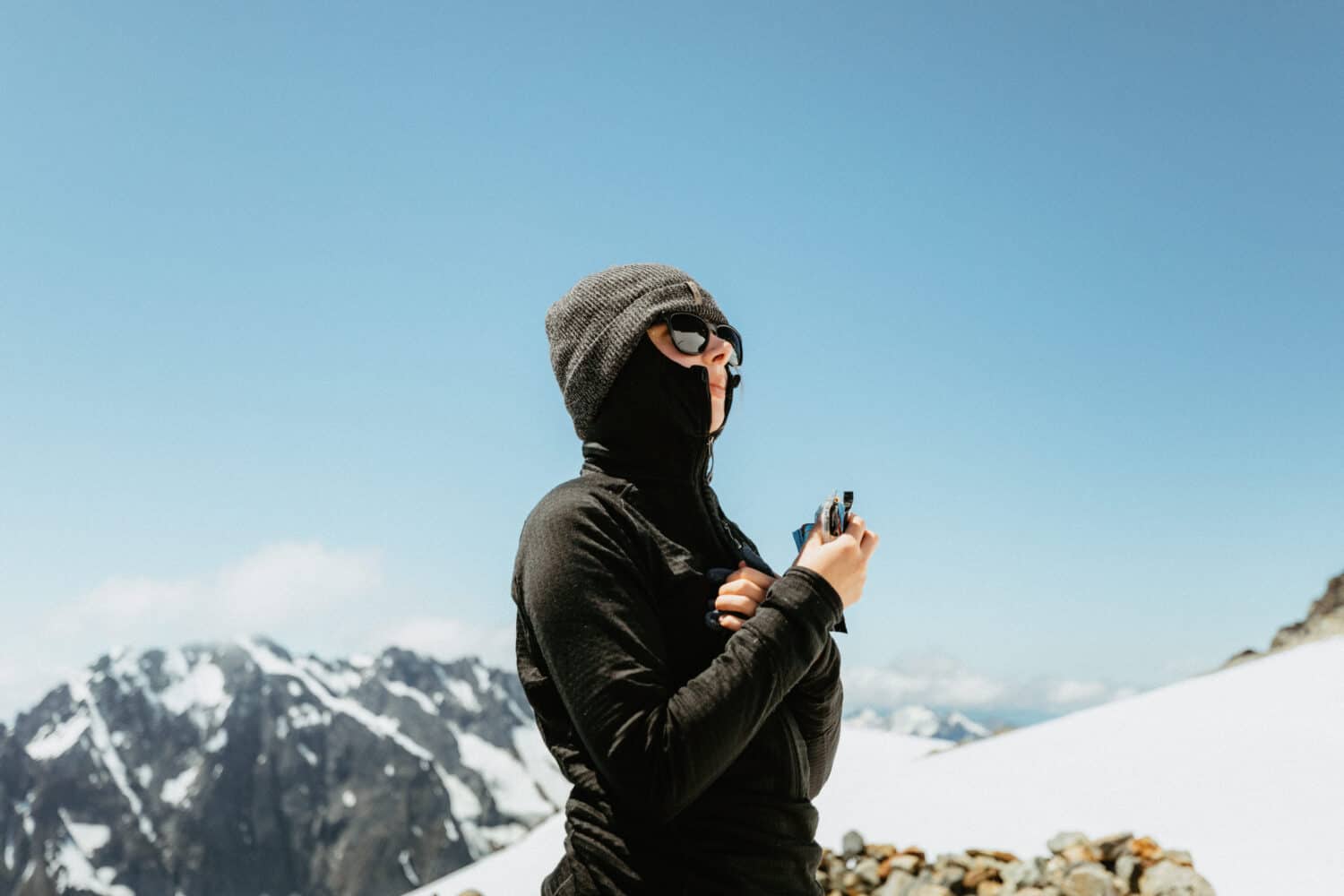
When thinking about the proper base layers, you want to remember that this layer’s role is to regulate your body temperature while also wicking moisture.
When on a winter adventure, it’s important that your skin stays dry. Wet clothes = wet skin = lower body temperature.
Wool and polyester (or a blend of natural and synthetic materials) are great base layer fabrics, but just remember to stay away from anything cotton. Cotton absorbs moisture and takes forever to dry.
Long story short – if your cotton gets wet, you’ll be very cold for a very long time.
Read More: Everything You Need To Know About Ice Skating on Lake Louise
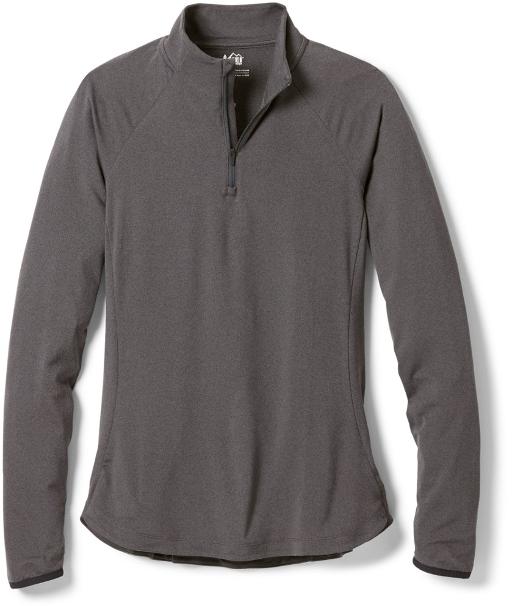
You can find great base layer tops and bottoms from brands like Patagonia, Smartwool, Icebreaker, or REI Co-Op.
Here are our favorite base layer picks:
- ($) REI Co-Op Mid-Weight Base Layer Crew Top (Men’s) (Women’s)
- ($$) Smartwool Merino 150 Long Sleeve Crew Top (Men’s) (Women’s)
- ($$$) Icebreakers Everyday Long Sleeve Crew Tops (Men’s) (Women’s) (pricey but they will practically last you forever)
Read More: Winter In Washington: 25 Incredible Adventures To Do During the Cold Season
Layer 2: The Insulating Layer
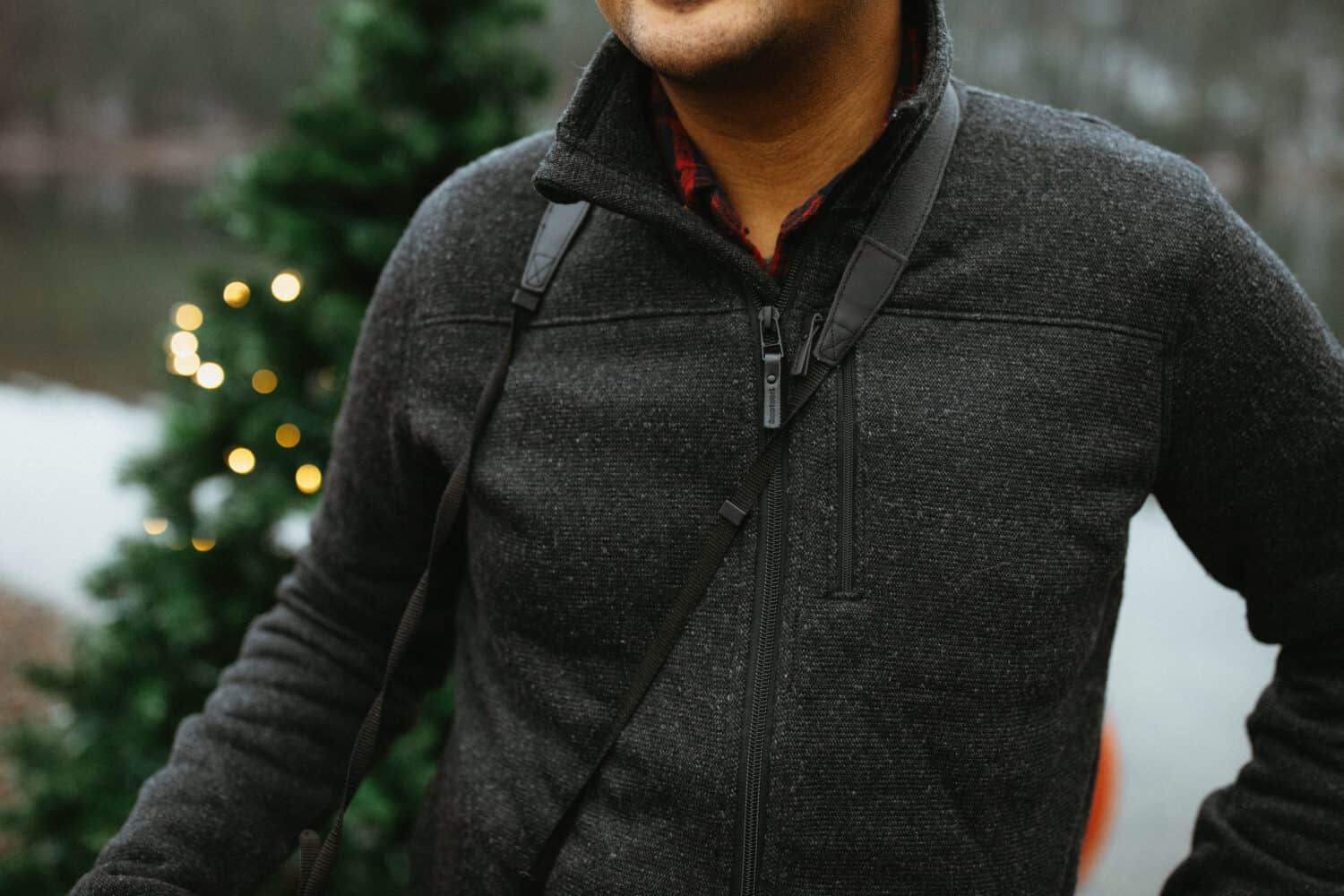
So, what do you put over the top of your base layer? It’s time for the insulating layer.
This layer is crucial for keeping in the body heat that your base layer is regulating, trapped close to your body.
Typically, insulating layers are made of wool, down or synthetic down (like your sleeping bag), or fleece. But keep in mind, down is NOT warm if it gets wet. So it’s important you choose insulating layers that are appropriate for your adventure.
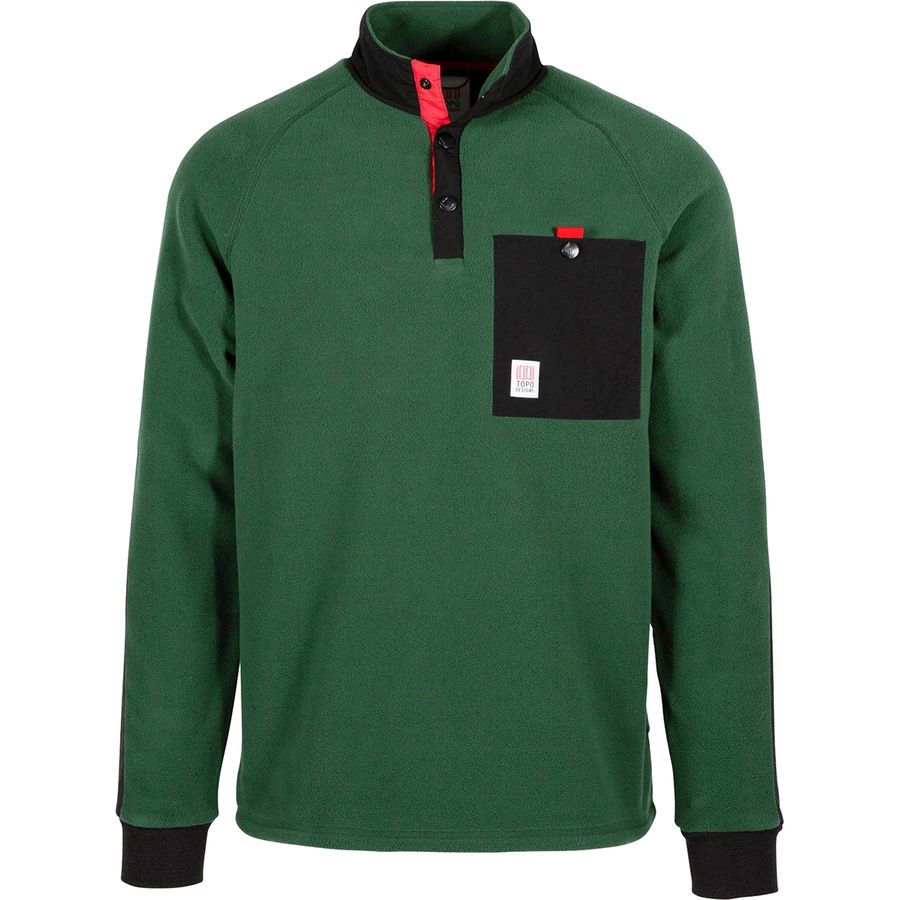
Insulating layers can be on the more expensive side, especially if you’re going for down. But remember, these layers play such an important role in keeping you warm and could make or break your experience outside.
They are also built to last, so you may pay a little more now, but you’ll be using that jacket for years.
Read More: What To Pack For A Winter Trip To Banff, Canada
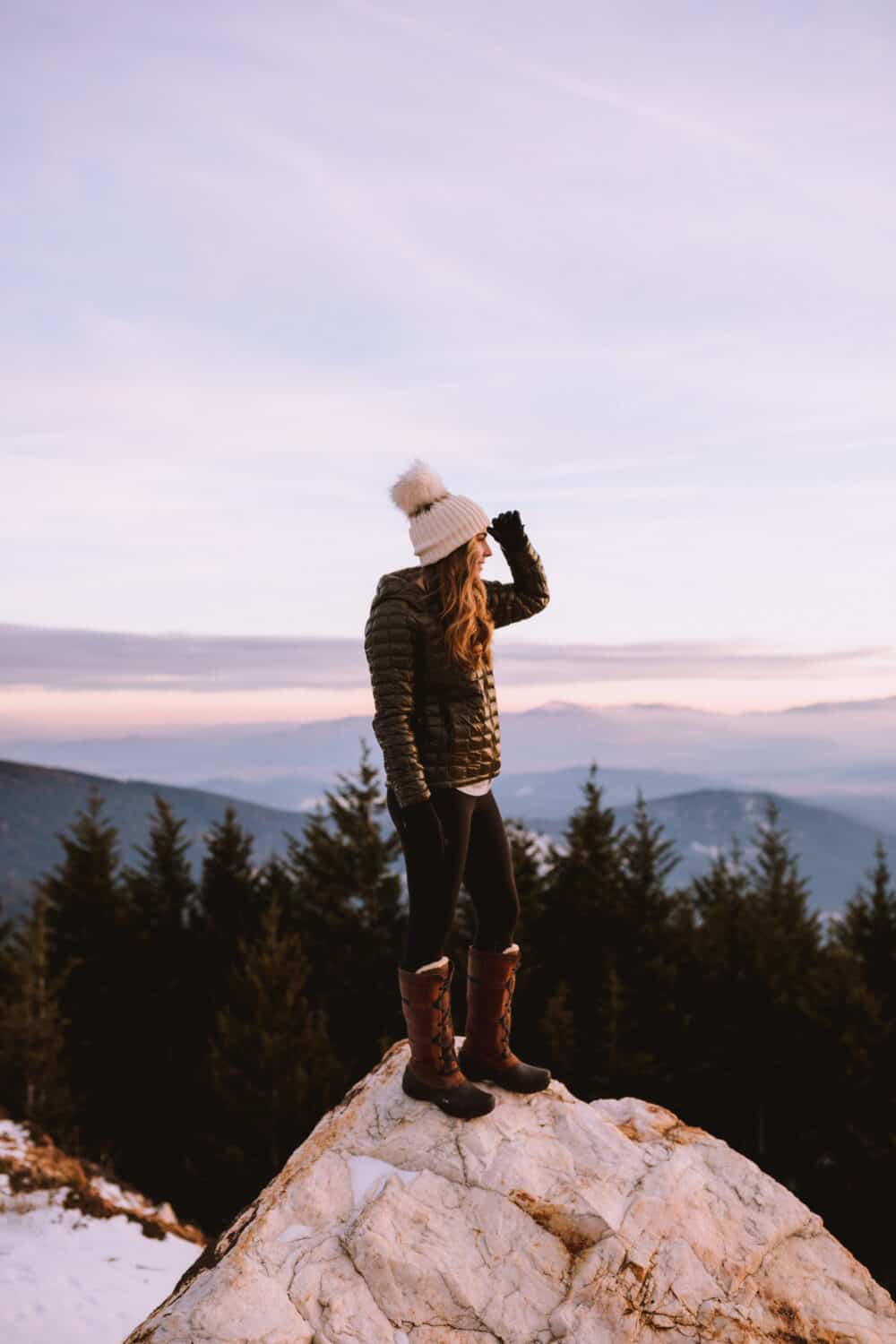
Here are some of our favorite insulating layers:
- ($) REI Co-Op Mt. Goode Full-Zip Fleece Jacket (Men’s) (Women’s) (great overall, affordable layer)
- ($$) Patagonia Better Sweater Full-Zip Fleece Jacket (Men’s) (Women’s) (Will last you a lifetime)
- ($$$) Arc’teryx Kyanite Hoodie (Men’s) (Women’s) (Excellent for mountain climbers and alpine sports)
Layer 3: Outer Layer (Coats, Jacket & Pants)
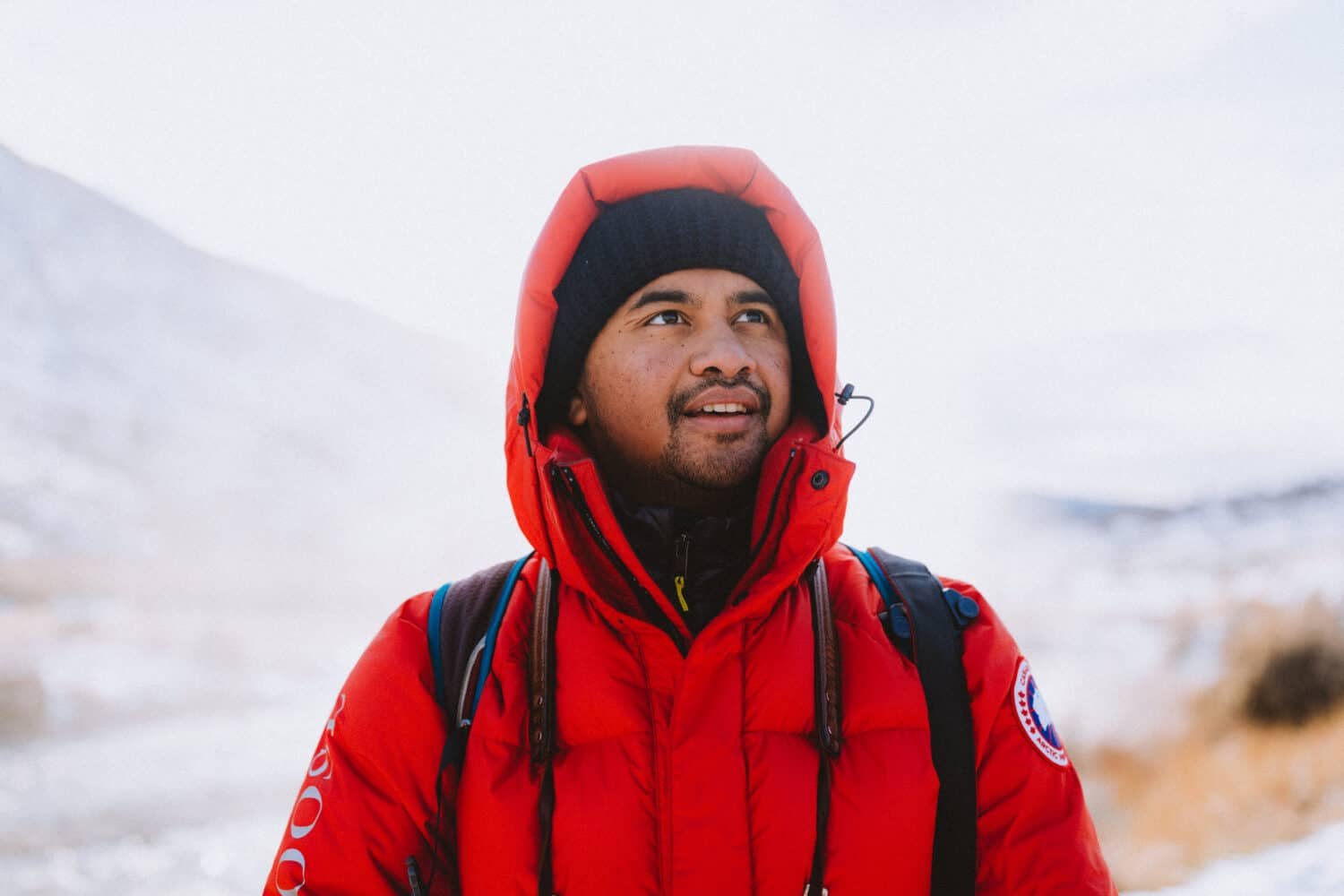
Now for the outer layer, aka: the shell layer. This layer will protect you from the elements: wind, rain, snow, and any harsh weather you may come across on your adventure.
You’ll find styles that range from pricier waterproof layers to more simple (and budget-friendly) wind-resistant layers.
However, that doesn’t mean you need a $500 arctic-level jacket for a simple PNW hiking trail. It’s important to remind yourself why you’re buying an item, and what you will use it for.
On a budget? Read our guide to finding discount outdoor gear all year long!
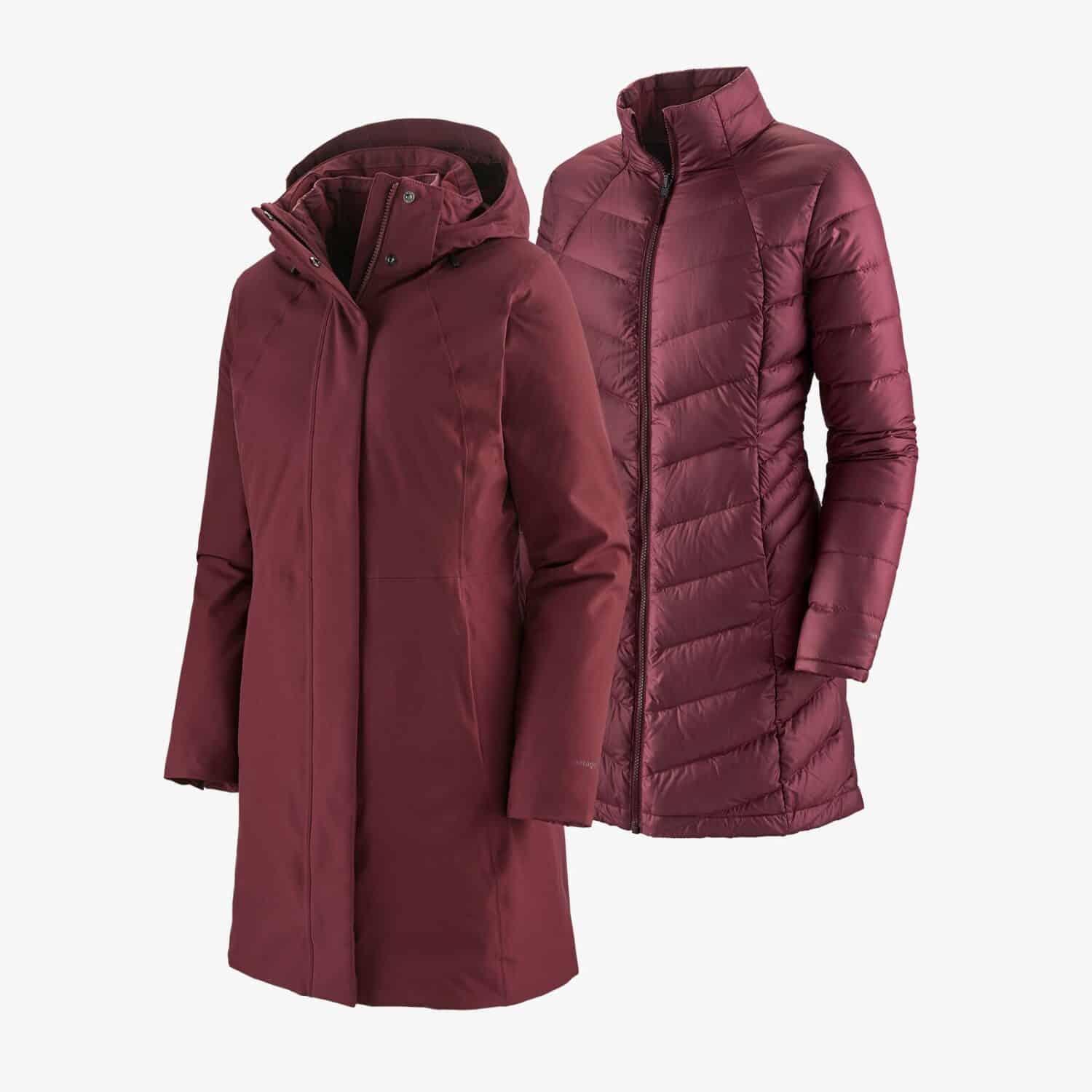
Waterproof Breathable Outer Layer
When it comes to this layer, there are a few different routes you could take. The first is a waterproof, breathable shell. Most shell layers are vented and allow for some heat and moisture to escape, and many are also treated to be water repellant.
This type is often the most expensive BUT it’s also the most functional. Choose this type of layer if your adventure includes questionable weather conditions, especially if you’re out for multiple days in the fall or winter, where the weather tends to be colder and wetter.
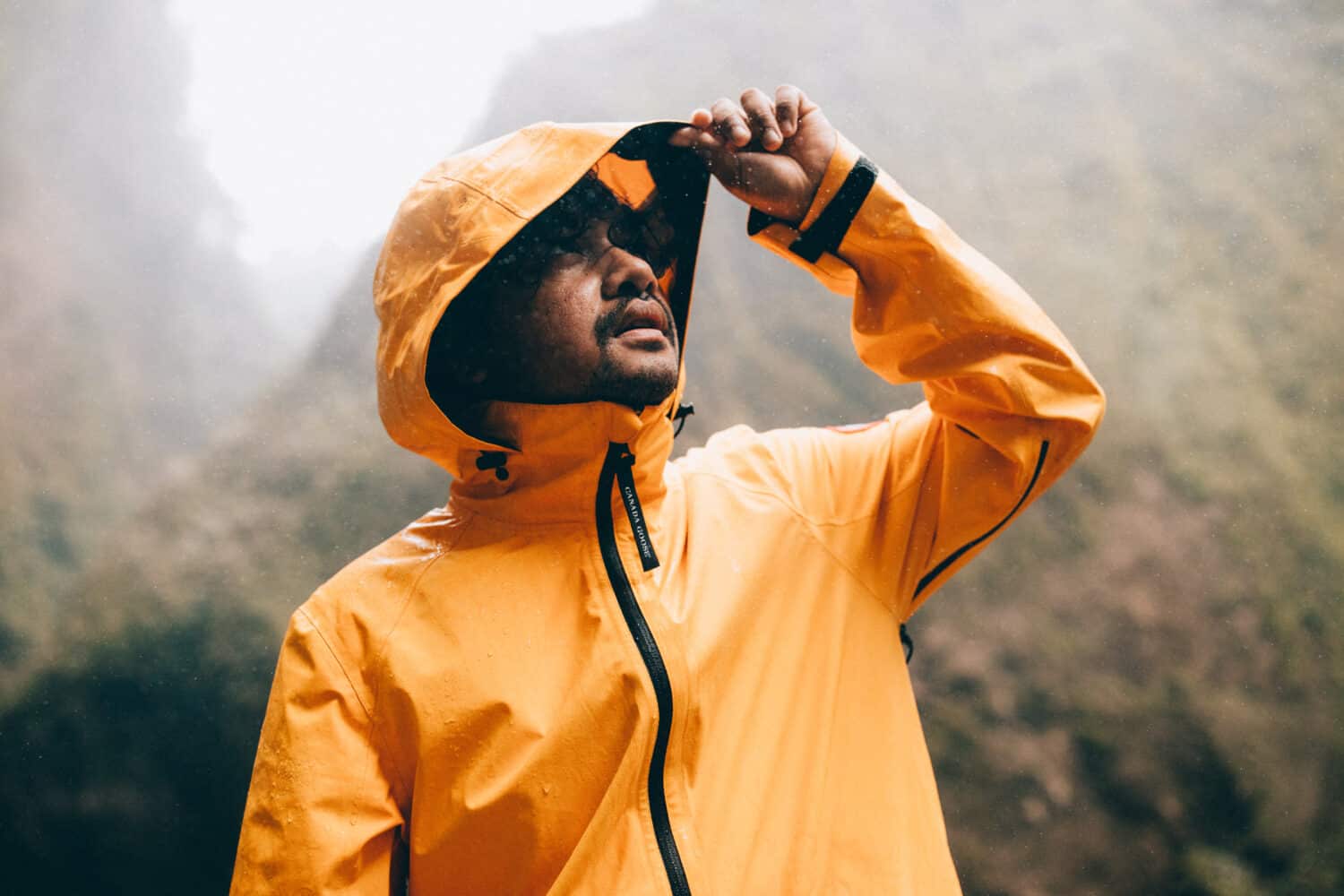
The second route you could take when it comes to choosing a shell layer is water-resistant and breathable.
Go with this layer if you’re going to be out for a day hike or shorter activity in drizzly and windy conditions. Winter in San Francisco is mild, so this is an excellent layer to fend off wind and light rain there.
This type of shell is also lighter-weight, so it’s a good choice for anyone doing any high-intensity activities outside, like trail running or mountain biking.
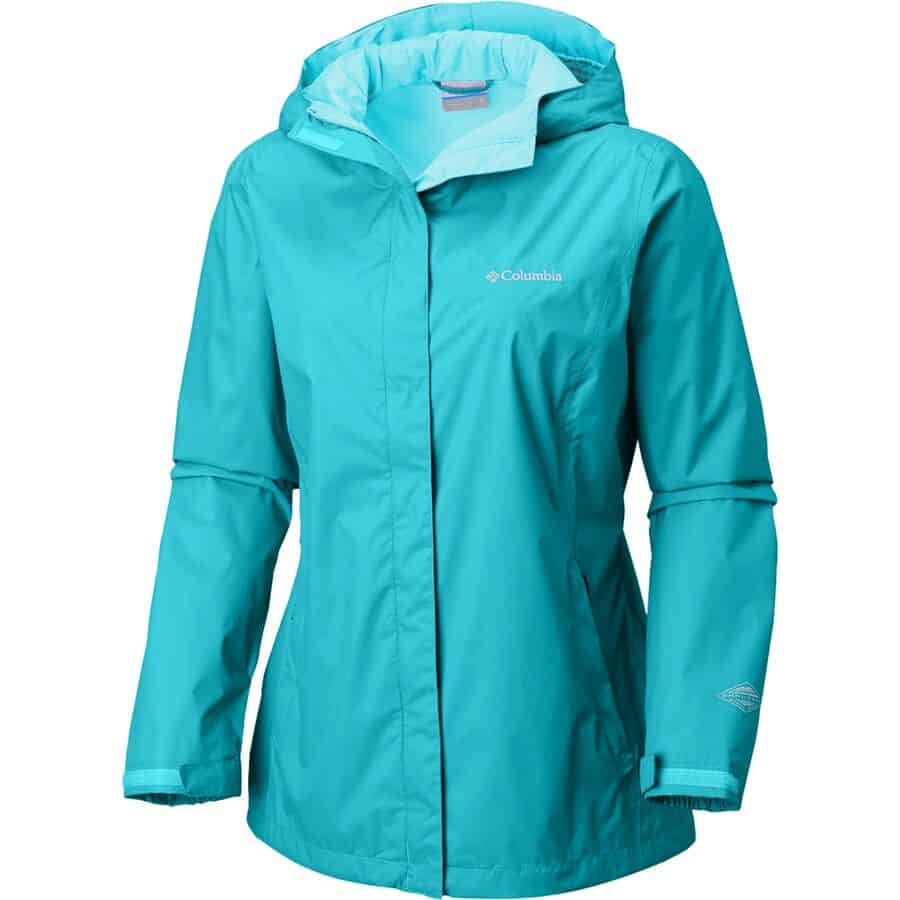
Here are a few of our favorite types of rainwear jackets: The Columbia Arcadia II, The North Face Venture 2 Jacket, and the Patagonia Torrentshell 3L Jacket. (All of these are between $50-$150)
Soft Shell Outer Layer
Consider getting a soft shell if you’re doing any kind of outdoor activity where you may break a sweat, like packing for a backpacking trip or snowshoeing at Taggart Lake in the Tetons.
This is the most breathable shell type and often combines light wind and rain protection with light insulation. Essentially a soft shell combines two jackets into one.
Some of our favorite soft shell jackets include:
- ($) REI Co-Op Activator Shell Jacket (Men’s) (Women’s)
- ($$) Outdoor Research Ferrosi Jacket (Men’s) (Women’s)
- ($$$) Arc’teryx Gamma SL Hoodie (Men’s) (Women’s)
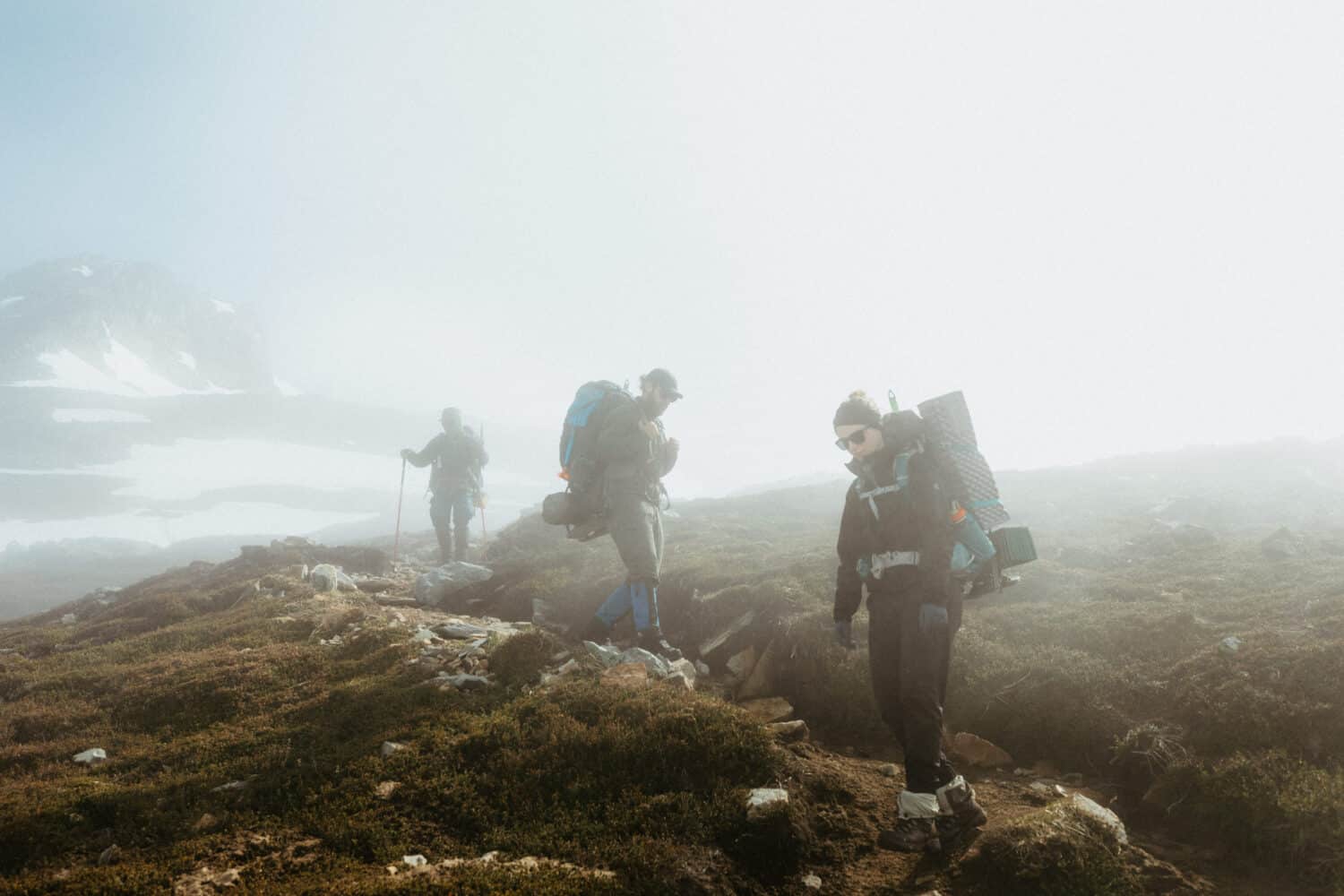
Non-Breathable Layer
The last shell layer option to consider is a waterproof, non-breathable shell. This type of shell is strictly for keeping you protected from the elements.
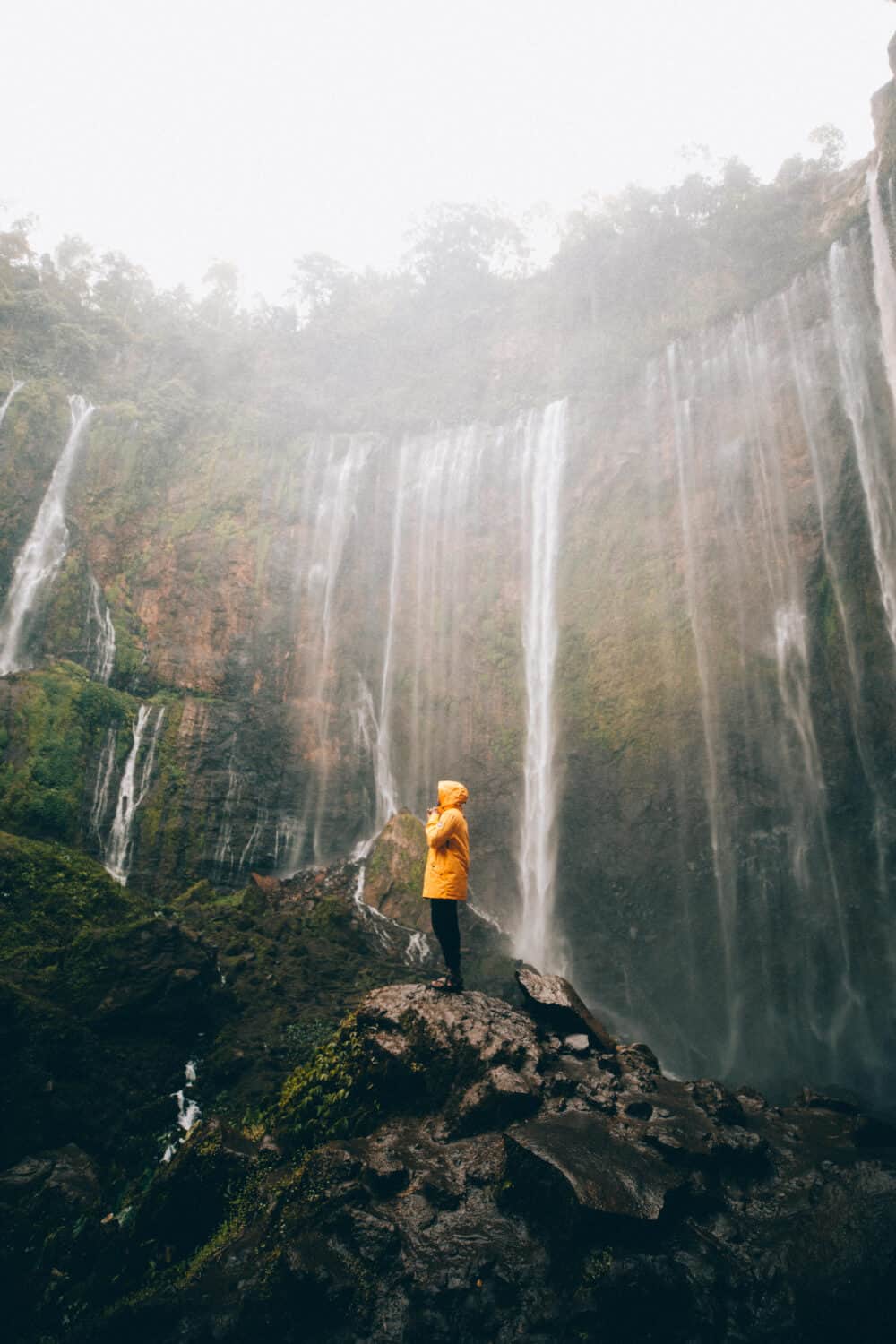
It’s not insulated, nor is it breathable, so be sure you don’t wear this kind of shell while working up a sweat because your layers beneath are sure to get saturated with sweat and that wouldn’t be good.
For style, we love the Stutterheim rubberized rain jackets, and for function, this affordable REI Co-Op GTX Jacket is the way to go for wet hiking trails.

Other Essentials To Layer Clothes For Winter
Now that you have the basics, there’s a few other essentials you’ll need to make sure your outdoor winter adventure is a success:
A Beanie
Don’t forget to keep your head and ears warm too! It might seem insignificant, but covering your head and ears will help keep your body heat from escaping.
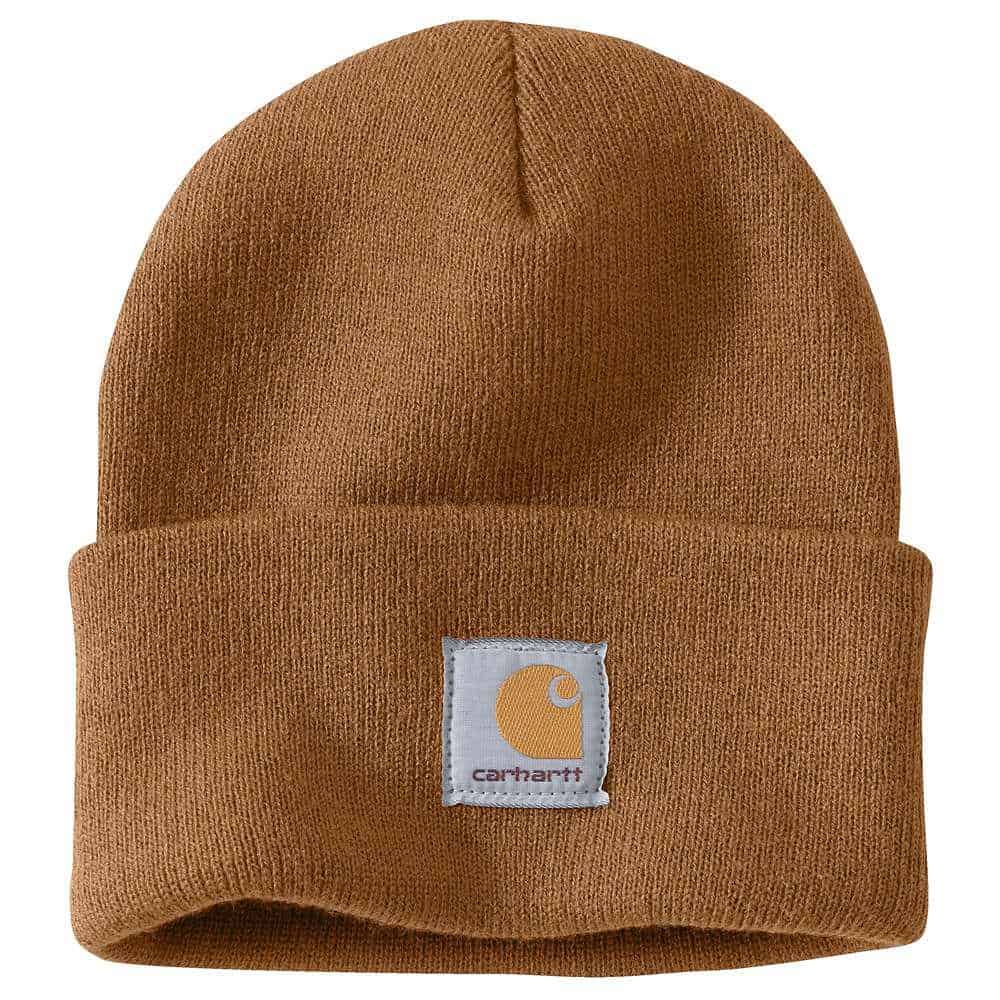
Browse REIs huge selection of beanies, toques, and hats to keep you warm in style.
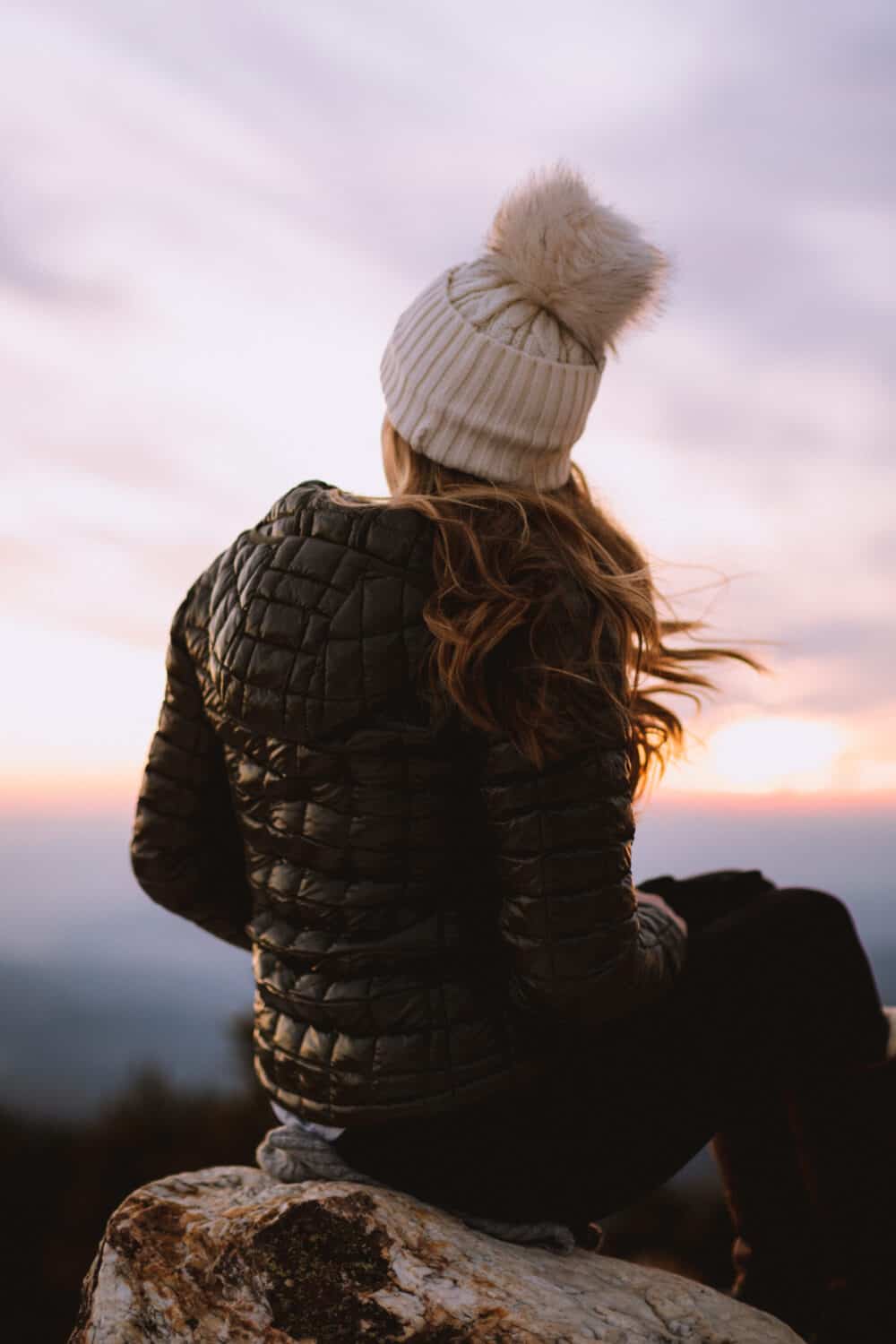
Wool Socks
Wool socks are a must for any adventure, regardless of the time of year. But especially during the winter when there’s a higher chance of your feet getting cold. Wool socks help wick moisture and they dry quickly so even if your feet sweat while you’re hiking, the sweat won’t give you cold toes.
Our favorite hiking socks:
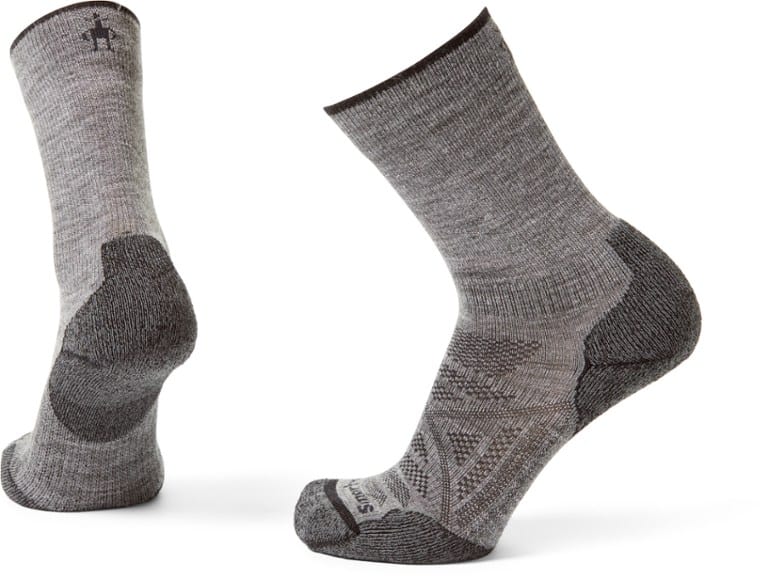
Pro tip: it’s always a good idea to pack an extra pair of wool socks in your pack, even if you’re just going on a day hike. You never know when you might accidentally step in a puddle or get some snow or rain in your boots. And if you don’t end up using them on your hike, there’s nothing better than slipping on a fresh pair of socks once you’re back in the car.
Read More: 15 Fun Things To Do In Bozeman, Montana In Winter
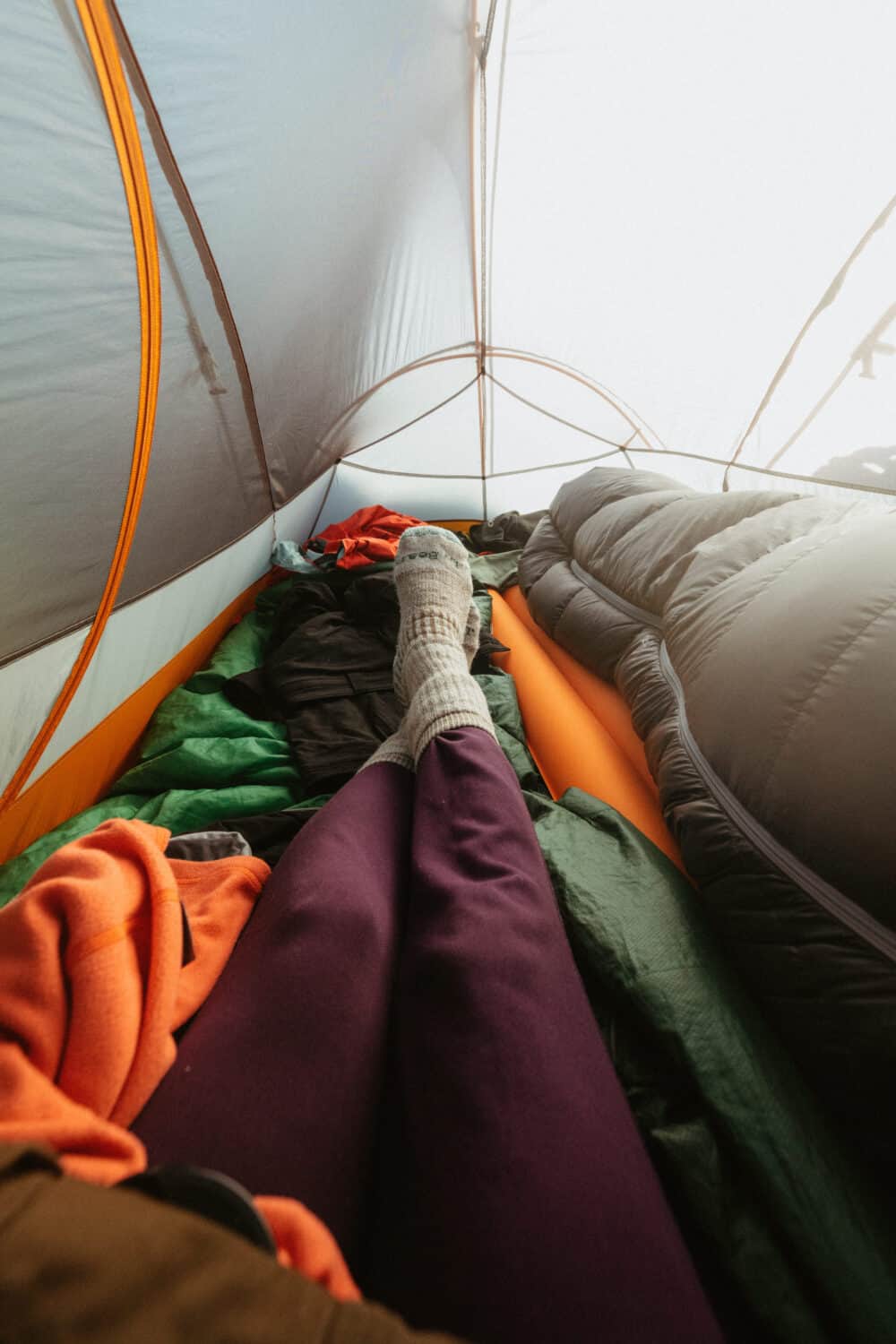
Warm Gloves
Nothing ruins an adventure as much as cold hands. Pack some warm gloves or mittens to help you keep your hands warm and dry, and fend off the pain that comes from extremely cold fingers.
Here are some of our favorite, hiker friendly gloves to bring on cold adventures:
- Black Diamond Screen-Tap Friendly Gloves
- Smartwool Liner Gloves (Tech Compatible)
- Fox River Mittens (Super cozy!)
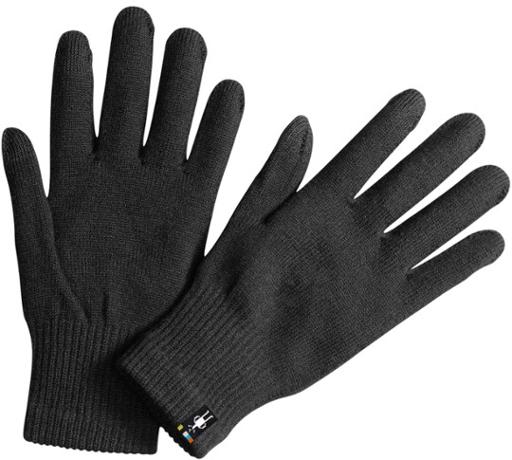
Read More: What To Expect On A Winter Trip To The Banff Gondola
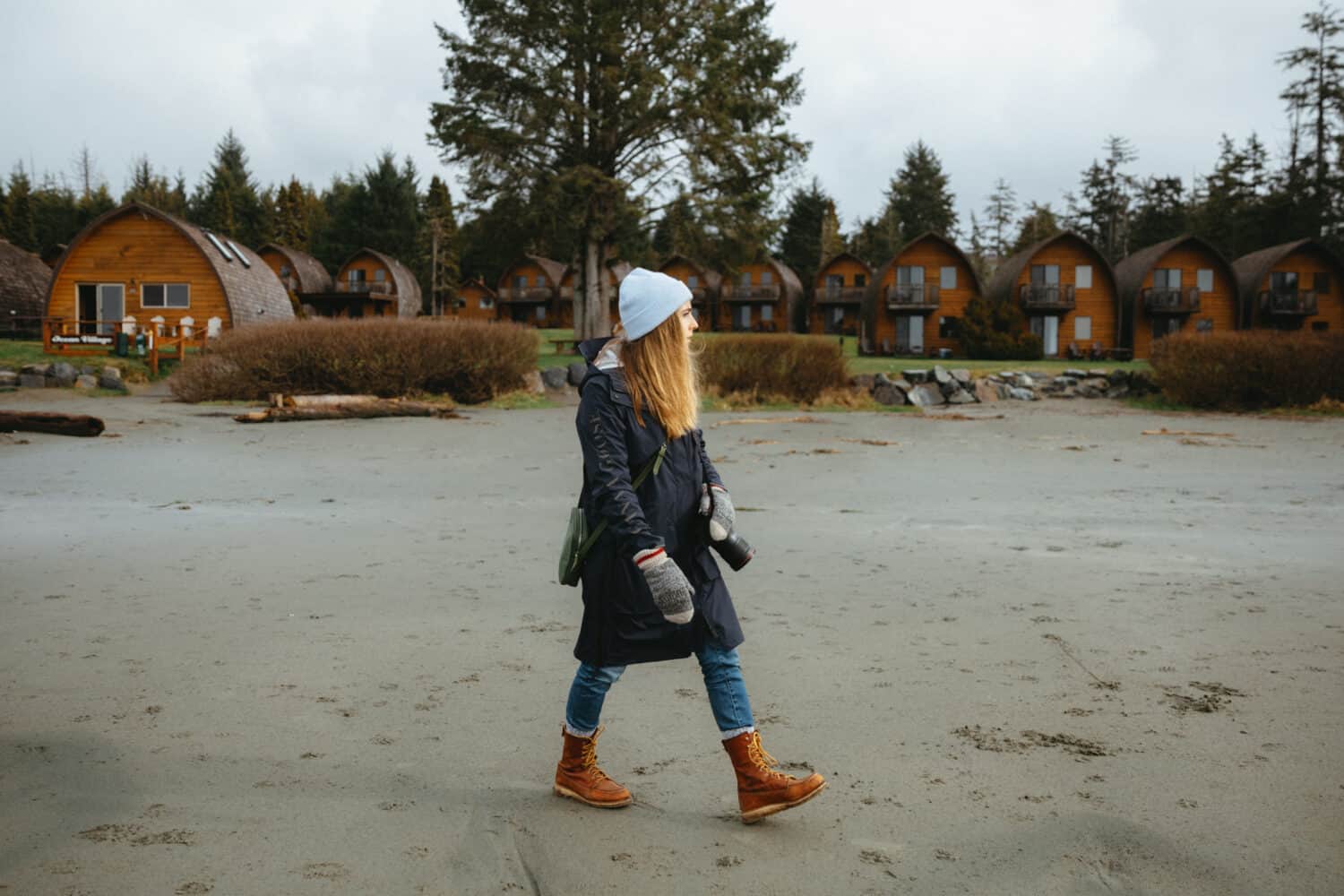
Waterproof Hiking Boots
This one’s important, especially if you’re adventuring in the Pacific Northwest by taking one of these hiking trails near Seattle. There is no shortage of rain here!
The best way to keep your toes (and the rest of your body) warm is by keeping your feet dry. Look for words like “Gore-Tex” (often abbreviated as GTX too) which is a material that lets air and perspiration out, but doesn’t let rain in.
Currently, our favorite boots are the St Elias FG GTX from Vasque, which have a Gore-Tex membrane, and leather exterior that fits better the longer you wear them!
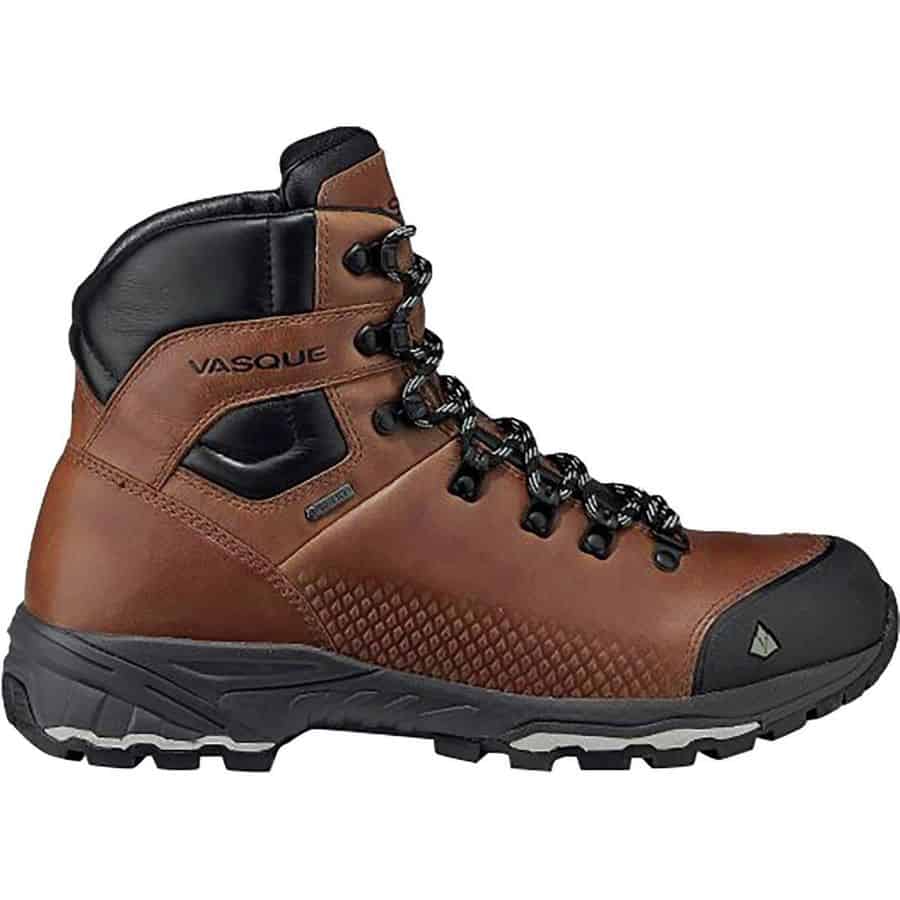
Invest in some waterproof hiking boots that can withstand lots of rain, snow, or the occasional puddle!
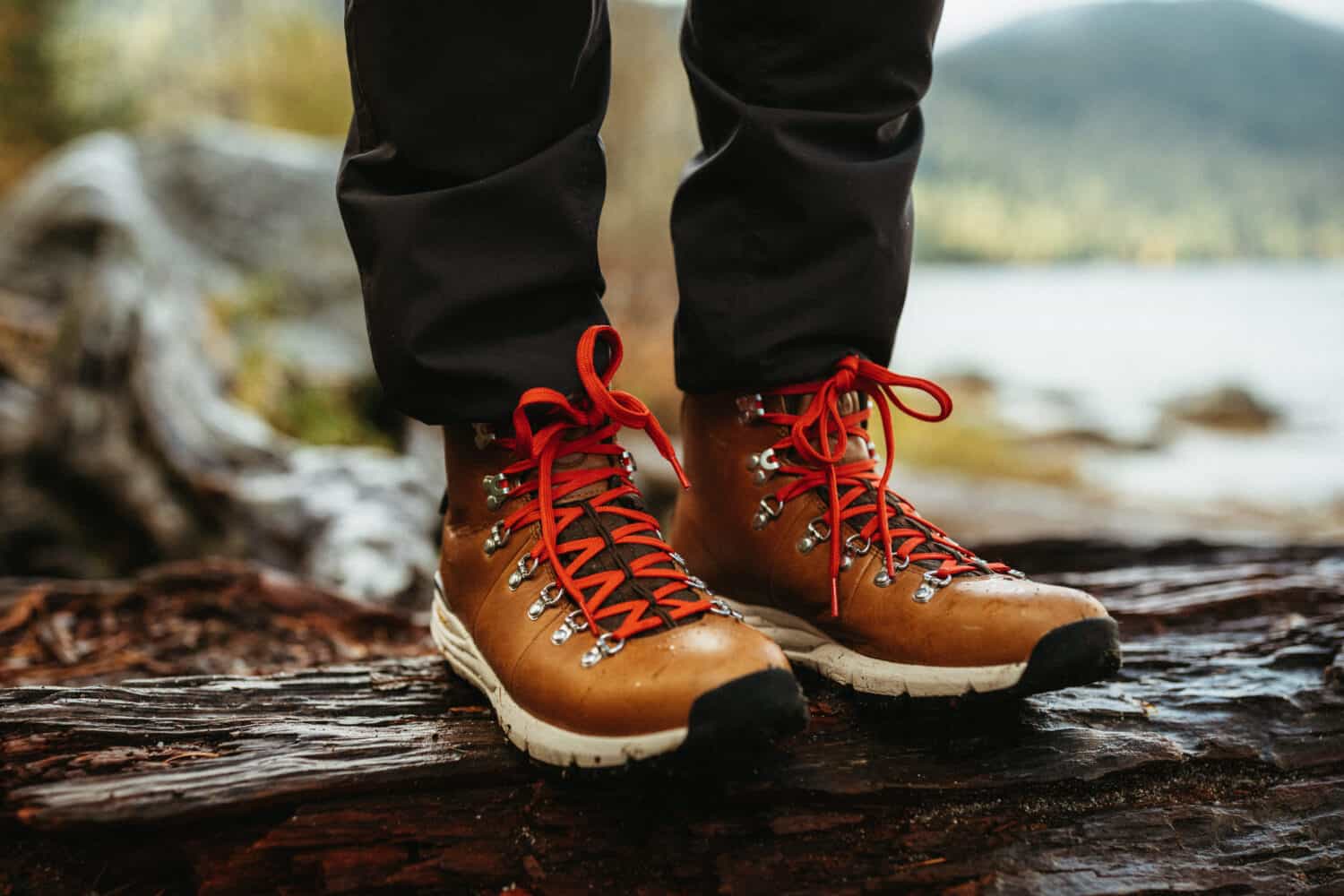
Did You Learn Something New About How To Layer Clothes For Winter?
Hopefully, our tips on how to layer clothes for winter and top gear picks gets you feeling excited to be outside in the winter!
It may take some trial and error, but if you stick with it, we promise that winter adventures can offer just as much fun as warm weather ones.
